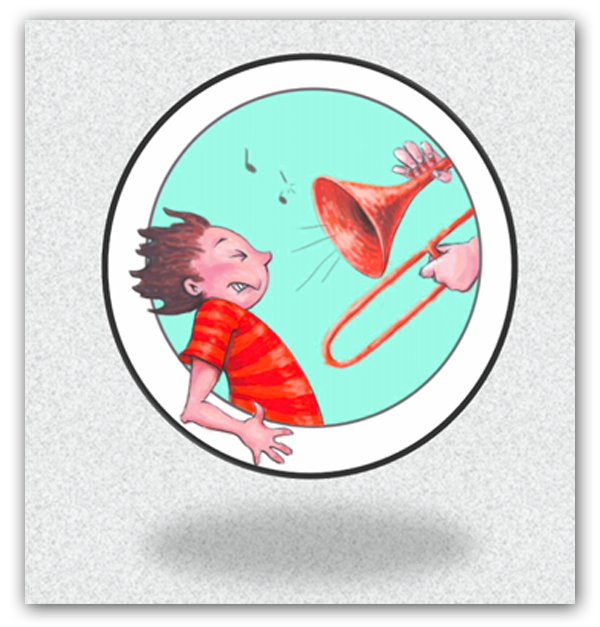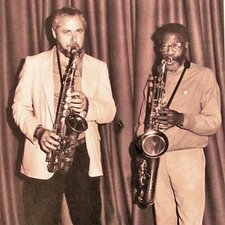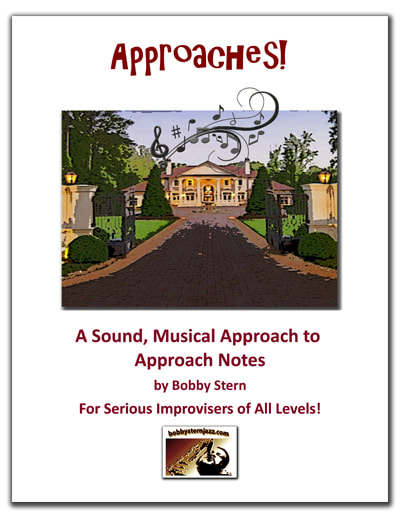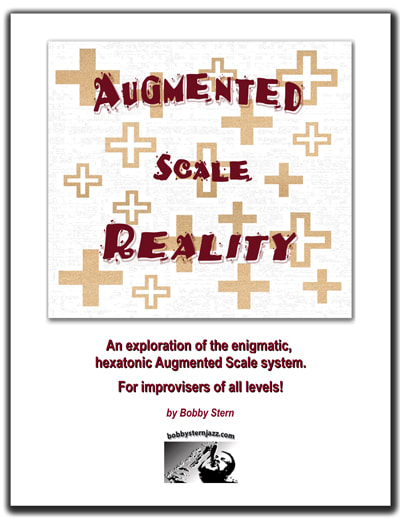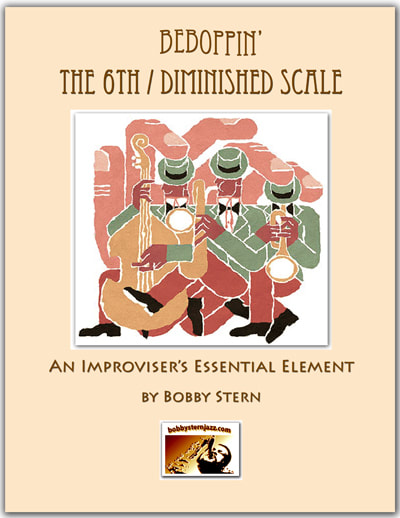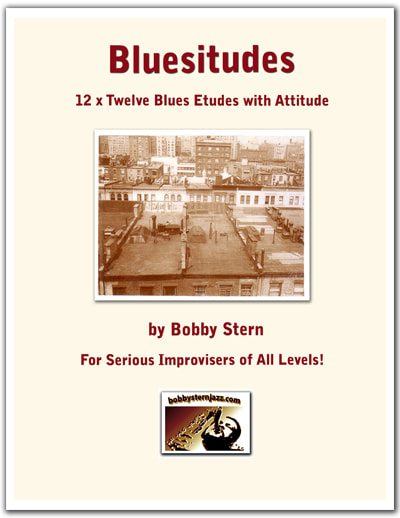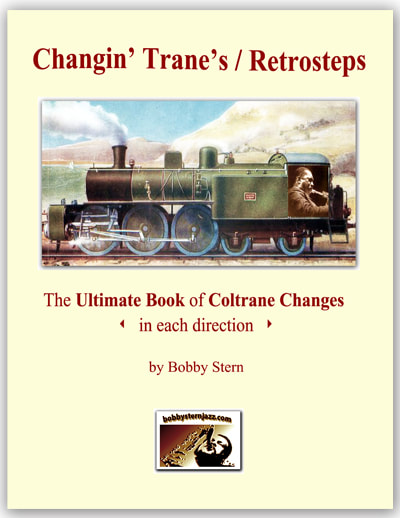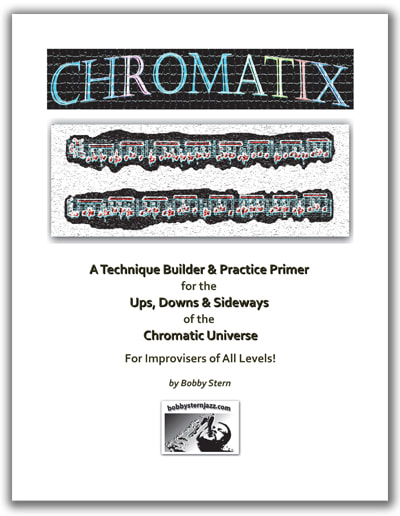Who Put the "Hex" on My Hexatonic?
(Tritone Minor, That's Who!)
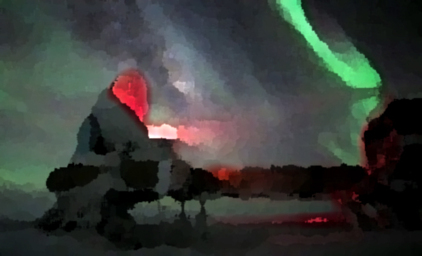 "Impression of Mr. Eerius N. Hedlace at the Piano''. Painting by Pho-Toh Ziap
"Impression of Mr. Eerius N. Hedlace at the Piano''. Painting by Pho-Toh Ziap C-Db-Eb F#-G-A
This scale is actually a derivative of the half tone / whole tone diminished scale, with the E - Bb tritone removed:
C-Db-Eb (E) F#-G-A (Bb)
In 12 tone set theory, it would be seen as a pair of 013 trichords spaced a tritone apart.
As a triad pair, it consists of 2 minor triads, a tritone apart: C-Eb-G / F#-A-C#
And, if you haven't already noticed, our new friend turns out to be the dark, mysterious, little known first cousin of what has become commonly known to improvisers as the "Tritone Scale", a likewise hexatonic formation; made up of 2 Major Triads a tritone apart (C-E-G / F#-A#-C#) and derived from the same diminished matrix.
As you will see and hear, there is a large qualitative difference between these two "relatives".
I haven't yet found any other names for an exact match to this scale (Slonimsky p.2 #6, no name. Several Carnatic Ragam come close, but no incense).
That's why I, hereby, take it upon myself to christen it (drum roll).................
"The Tritone Minor Scale" (e.g. C Tritone Minor, F# Tritone Minor, etc.).
Pour the champagne and strike up the band!
3 tritones (C-F#, Db-G, Eb-A), 2 whole steps (Db-Eb, G-A), 4 min. 3rds (C-Eb, F#-A, Eb-F#, A-C), 2 Maj. 3rds (Eb-G, A-C#), 2 perfect 4ths (C#-F#, G-C).
Of course, the most telling are the minor 3rds and tritones, which create a diminished 7th chord (C-Eb-F#-A) plus a tritone (Db-G), which give you the 6 notes of the scale.
The fact that there are no Major triads included here make even the 2 Major 3rds (which are themselves a tritone apart) sound "un-Major" like. That pretty much explains why just about any flavor of Major has been sucked out of this symmetrical scale.
That's why you won't be hearing this one on local pop radio.
But, "'Cause I'm Happy", I really like the sound and feel of this scale. It has tons of character. The scope of feeling runs the gamut from "eerily enchanting" to flat out "grim"; depending, of course, on the context in which it's presented.
Hey, you need some dark colors on your palette, too.
It's probably best suited for use over an extended modal or pedal situation, although since it's a truncated form of the diminished scale, it should work wherever a diminished scale might.
In the downloadable exercise below, the Tritone Minor Scale is presented diatonically in ascending and descending order in the first 2 measures; followed by its 2 inherent minor triads (Triad Pair) in several different inversions for the next 2 measures. The next 4 measures contain the triad pairs, descending in groups of 4 eighth notes (top note repeating).
As this is a symmetrical scale "of limited transposition", meaning that there are really only 6 mutually exclusive scales involved before they repeat (C and F# Tritone Minor contain the exact same notes, for example), they are nevertheless shown here in all 12 keys.
The chord symbols, with their alterations, are suggested as they are based on the roots of the dominant 7th chords from the original diminished scale.
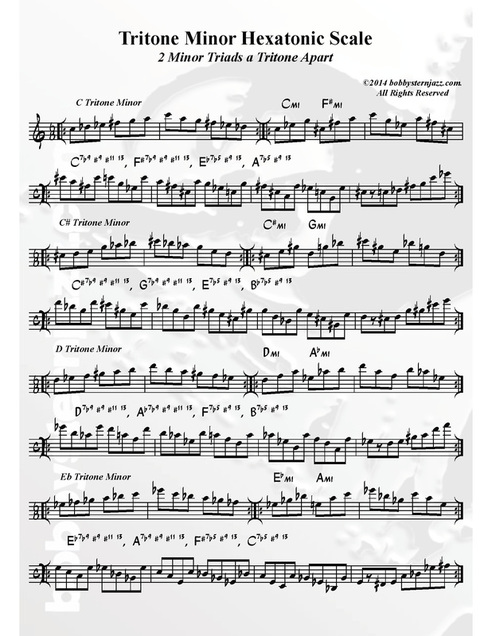
 RSS Feed
RSS Feed
